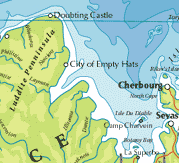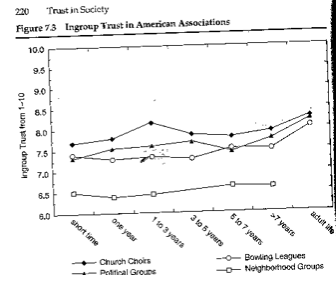
Caterina, the Duchess of Flickr, quibbles. Here is a portion of what triggered that.
What creates a community in the real world is proximity…. Same theme in social networking: Orkut, Friendster, even Flickr� you GO to a specific location on the web.
I too have an easily triggered sore spot about that. The presumption that community in the real world arises from proximity is romantic nonsense. The romantic anthropologist may wander into the bush and return with a fairy tail of idilic bliss. The professional anthropologist comes back with stories of gossip, long simmering feuds, resource hoarding, murders, kidnapping. It’s easy to announce that proximity breeds community but it’s also a fine way to breed contempt. The romantic myth that tribes huddled around the fire are some how a more valid, original, and pure form of community is poppycock.
Communities crystalize out of working on a common cause. Yes surviving the winter night by keeping a fire alive counts as common cause. As does keeping the wolves from the door or raising the passel of children. But the common cause of making creating a profession, developing a craft, mutual aid in the hobby of keeping your glow in the dark guppies alive, or forcing a vendor to honor a warranty are common causes and none of them demand proximity.
The romantic myth is only part of the problem. Deeper is a confusion about cause and effect. Proximity is a possible solution to a coordination problem, nothing more. It doesn’t create community. Because communities always have coordination problems and one means to solving these is proximity they are oft correlated. Proximity is causative It can either help or hinder working on the common cause. It is entirely neutral. Putting people into a cube space, packing prisoners four to a cell, loading up buses with commuters, assigning 30 third graders in a class room, placing college freshmen together in dorm rooms – none of these create communities except by dump luck or hard work.
Proximity serves other masters as well, in a business plan jargon it’s what’s called sticky. If you have a group of people locked into proximity with each other that’s just about as sticky as it gets. And of course a common cause emerges, the common cause of dealing with the problems created by this lock up. This is why a monopoly’s customers are a community. It maybe acceptable in such cases to say that proximity generates community; but it would be more accurate to say that forced proximity is a coercive way to force a community into existence.
The sentence that follows the one quoted above is:
He challenges that these are communities, there’s “proximity” (all on one site) but not community.
I see signs that he is was beginning to see thru the romantic myth and is looking for words to split the difference; hence the communities v.s. community split. In the end, starting from proximity is not helpful.

